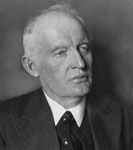Edvard Munch

Edvard Munch was a prolific yet perpetually troubled artist preoccupied with matters of human mortality such as chronic illness, sexual liberation, and religious aspiration. He expressed these obsessions through works of intense color, semi-abstraction, and mysterious subject matter. Following the great triumph of French Impressionism, Munch took up the more graphic, symbolist sensibility of the influential Paul Gauguin, and in turn became one of the most controversial and eventually renowned artists among a new generation of continental Expressionist and Symbolist painters. Munch came of age in the first decade of the 20th century, during the peak of the Art Nouveau movement and its characteristic focus on all things organic, evolutionary and mysteriously instinctual. In keeping with these motifs, but moving decidedly away from their decorative applications, Munch came to treat the visible as though it were a window into a not fully formed, if not fundamentally disturbing, human psychology.
